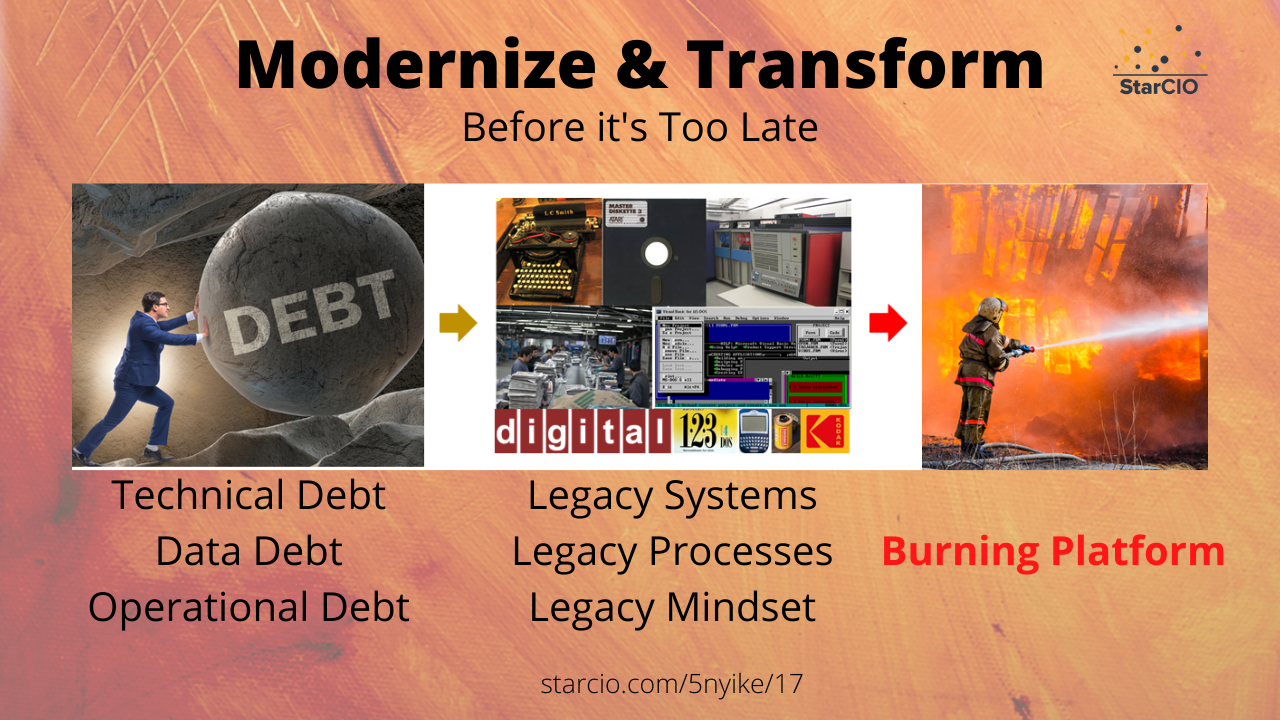Let's stop bickering about technical debt and start doing something about it!
Here's why. In this week's episode of 5 Minutes with @NYIke, I share the differences between debt (including technical debt, data debt, and operational debt), legacy systems and practices, and a burning platform. You can watch the episode below where I share the types, impacts, causes, and remediations that characterize the differences between tech debt, legacy systems, and burning platforms.
In the episode, you'll see that while technical debt often impacts the people supporting technology or process, legacy systems impact the actual users (which can be customers), and burning platforms the business and brand. In many situations, what starts as debt, often progresses to legacy and sometimes to a burning platform.
Brand Systems, Processes, and Culture: Debt, Legacy, or Burning
I urge CIOs and IT leaders to label and brand these problems appropriately. Many business leaders don't understand the concept of technical/data/operational debt, and others lack empathy for the complications they create. While they understand the legacy concept, they view this problem as a high ridge to climb out of the canyon. In other words, it's easy for leaders to kick debt and legacy cans down the road because they don't know what to do about them.
But business leaders should understand a properly characterized burning platform.
Addressing a burning platform should be at the top of the budget list. The rationale should include a clear, metric-driven picture of the impact it's having on the business.
How Agile Leaders Manage Legacy Systems
I've already shared several posts on how to manage technical debt and related best practices. But what about legacy systems, processes, and mindsets?
Sorry folks to disappoint, but the answers depend on the nature of what makes the system, process, or mindset, a legacy, its business impact, the cost to support it, and the feasibility of transforming away from it.
But there are ways in agile to chip away at legacies. It starts by instituting this agile planning process to prioritize questions and answer them during sprints.
So while burning platforms should be at the top of budget needs, reporting on legacies should be included in operational reports. Every reporting period, broadcast the issues, the impacts, and some of the questions a multi-disciplinary group is researching on transformation options.
Leaders can't easily ignore or forget the legacies when they are front and center in these operational reports.
As always, I am here for your questions. If you don't know where to start, continue, or grow with how low-code can drive digital transformation, please reach out to me!

No comments:
Post a Comment
Comments on this blog are moderated and we do not accept comments that have links to other websites.